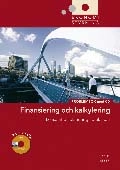

Principles of economics
- Utgiven: 1998
- ISBN: 9780030982385
- Sidor: 850 st
- Förlag: Dryden Press
- Format: Inbunden
- Språk: Engelska
Om boken
Described as "the most anticipated book in college publishing", Mankiw's Principles of Economics is finally here. And what makes it stand out from all of the other principles texts? He wrote it for the students. He wanted to bring economics to life for them and keep them interested in it. How did he do this? He has written a briefer text that explains economics by the rules not the exceptions, and by applications, not a lot of theory. In keeping with this theme, he has revealed to students how economics affects their everyday lives by building in a strong policy orientation to show them economics in "action". These are just a few of the strong points this book has to offer. Available spring 1999: EconActive software for students which includes 33 interactive Java graphs, cyber-problems, quizzes with feedback on answers and also includes brief chapter notes/key terms taken from the book. Features: * Chapter 1 introduces students to the 10 most important principles of economics which are then found throughout the book. * Chapter 3 is an early and accessible introductory discussion of one of economics' most powerful and universal insights: how people gain from comparative advantage and trade. This enables professors to include international applications at the beginning of the course. * Chapters 4-9, common to both splits, are concise and focus on Demand and Supply and its applications. * In Chapter 6, economics' most basic tool, supply and demand analysis, is put to work early to analyze the effect of real government policies. * Chapters 7, 8, and 9 expand the coverage of supply and demand to show what market outcomes mean to different groups of people and then use it to analyse taxation, the gains/losses from international trade, and explain the efficiency of markets. * Quick quizzes, case studies, "In the News" excerpts, "FYI" boxes, and end-of-chapter problems and applications are rich.
Åtkomstkoder och digitalt tilläggsmaterial garanteras inte med begagnade böcker
Mer om Principles of economics (1998)
1998 släpptes boken Principles of economics skriven av N. Gregory Mankiw. Den är skriven på engelska och består av 850 sidor. Förlaget bakom boken är Dryden Press.
Köp boken Principles of economics på Studentapan och spara pengar.
Referera till Principles of economics
Harvard
Mankiw, N. G. (1998). Principles of economics. Dryden Press.
Oxford
Mankiw, N. Gregory, Principles of economics (Dryden Press, 1998).
APA
Mankiw, N. G. (1998). Principles of economics. Dryden Press.
Vancouver
Mankiw NG. Principles of economics. Dryden Press; 1998.
Bokens omdöme
Ingen har recenserat den här boken ännu.



















